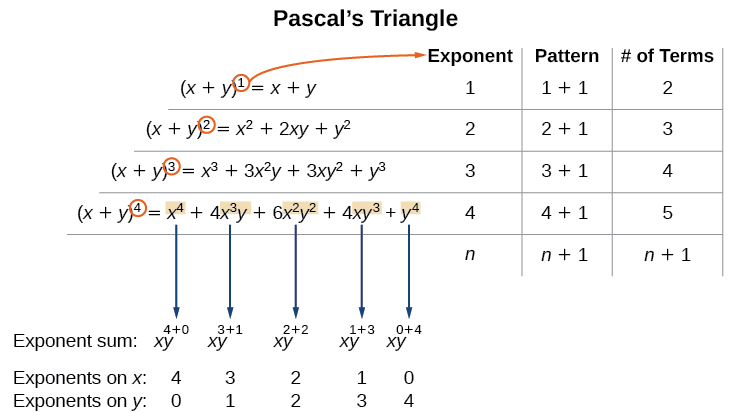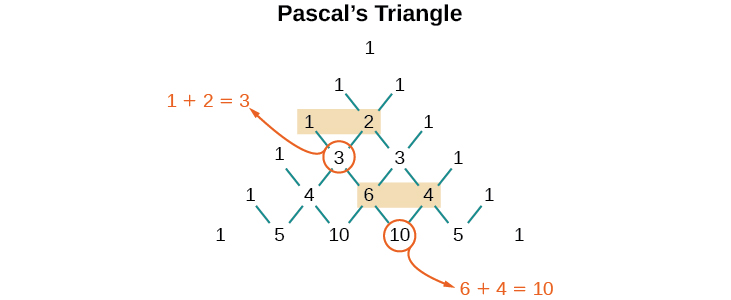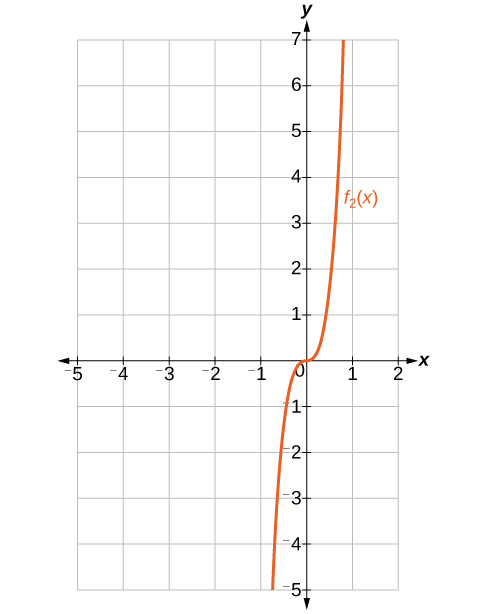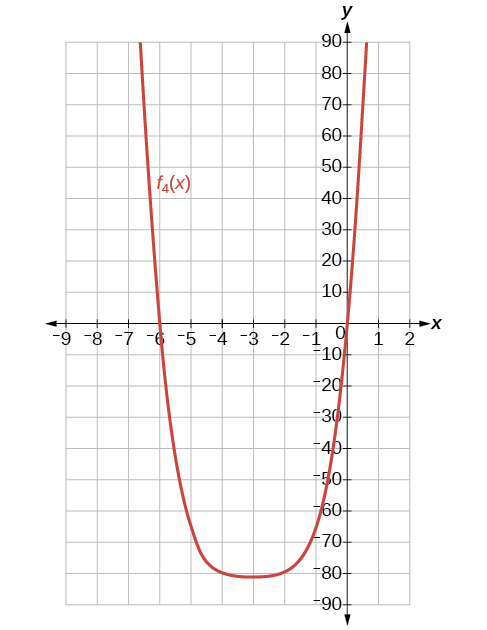
In this section, you will:
A polynomial with two terms is called a binomial. We have already learned to multiply binomials and to raise binomials to powers, but raising a binomial to a high power can be tedious and time-consuming. In this section, we will discuss a shortcut that will allow us to find
without multiplying the binomial by itself
times.
In Counting Principles, we studied combinations. In the shortcut to finding
we will need to use combinations to find the coefficients that will appear in the expansion of the binomial. In this case, we use the notation
instead of
but it can be calculated in the same way. So
The combination
is called a binomial coefficient. An example of a binomial coefficient is
If
and
are integers greater than or equal to 0 with
then the binomial coefficient is
Is a binomial coefficient always a whole number?
Yes. Just as the number of combinations must always be a whole number, a binomial coefficient will always be a whole number.
Find each binomial coefficient.
Use the formula to calculate each binomial coefficient. You can also use the
function on your calculator.
Notice that we obtained the same result for parts (b) and (c). If you look closely at the solution for these two parts, you will see that you end up with the same two factorials in the denominator, but the order is reversed, just as with combinations.
Find each binomial coefficient.
When we expand
by multiplying, the result is called a binomial expansion, and it includes binomial coefficients. If we wanted to expand
we might multiply
by itself fifty-two times. This could take hours! If we examine some simple binomial expansions, we can find patterns that will lead us to a shortcut for finding more complicated binomial expansions.
First, let’s examine the exponents. With each successive term, the exponent for
decreases and the exponent for
increases. The sum of the two exponents is
for each term.
Next, let’s examine the coefficients. Notice that the coefficients increase and then decrease in a symmetrical pattern. The coefficients follow a pattern:
These patterns lead us to the Binomial Theorem, which can be used to expand any binomial.
Another way to see the coefficients is to examine the expansion of a binomial in general form,
to successive powers 1, 2, 3, and 4.
Can you guess the next expansion for the binomial

See [link], which illustrates the following:
terms in the expansion of
begin with
and decrease to 0.
begin with 0 and increase to
To determine the expansion on
we see
thus, there will be 5+1 = 6 terms. Each term has a combined degree of 5. In descending order for powers of
the pattern is as follows:
and then for each successive term reduce the exponent on
by 1 until
is reached.
and then increase the exponent on
by 1 until
is reached.
The next expansion would be
But where do those coefficients come from? The binomial coefficients are symmetric. We can see these coefficients in an array known as Pascal's Triangle, shown in [link].

To generate Pascal’s Triangle, we start by writing a 1. In the row below, row 2, we write two 1’s. In the 3rd row, flank the ends of the rows with 1’s, and add
to find the middle number, 2. In the
row, flank the ends of the row with 1’s. Each element in the triangle is the sum of the two elements immediately above it.
To see the connection between Pascal’s Triangle and binomial coefficients, let us revisit the expansion of the binomials in general form.
 <div data-type="note" data-has-label="true" data-label="A General Note" markdown="1">
<div data-type="note" data-has-label="true" data-label="A General Note" markdown="1">
The Binomial Theorem is a formula that can be used to expand any binomial.
</div>
Given a binomial, write it in expanded form.
according to the exponent.
through
using the Binomial Theorem formula.
Write in expanded form.
into the formula. Evaluate the
through
terms. Simplify.
into the formula. Evaluate the
through
terms. Notice that
is in the place that was occupied by
and that
is in the place that was occupied by
So we substitute them. Simplify.
Notice the alternating signs in part b. This happens because
raised to odd powers is negative, but
raised to even powers is positive. This will occur whenever the binomial contains a subtraction sign.
Write in expanded form.
Expanding a binomial with a high exponent such as
can be a lengthy process.
Sometimes we are interested only in a certain term of a binomial expansion. We do not need to fully expand a binomial to find a single specific term.
Note the pattern of coefficients in the expansion of
The second term is
The third term is
We can generalize this result.
The
term of the binomial expansion of
is:
Given a binomial, write a specific term without fully expanding.
according to the exponent.
in the formula for the
term of the binomial expansion.
Find the tenth term of
without fully expanding the binomial.
Because we are looking for the tenth term,
we will use
in our calculations.
Find the sixth term of
without fully expanding the binomial.
Access these online resources for additional instruction and practice with binomial expansion.
| Binomial Theorem |
| term of a binomial expansion |
is called a binomial coefficient and is equal to
See [link].
What is a binomial coefficient, and how it is calculated?
A binomial coefficient is an alternative way of denoting the combination
It is defined as
What role do binomial coefficients play in a binomial expansion? Are they restricted to any type of number?
What is the Binomial Theorem and what is its use?
The Binomial Theorem is defined as
and can be used to expand any binomial.
When is it an advantage to use the Binomial Theorem? Explain.
For the following exercises, evaluate the binomial coefficient.
15
35
10
12,376
For the following exercises, use the Binomial Theorem to expand each binomial.
For the following exercises, use the Binomial Theorem to write the first three terms of each binomial.
For the following exercises, find the indicated term of each binomial without fully expanding the binomial.
The fourth term of
The fourth term of
The third term of
The eighth term of
The seventh term of
The fifth term of
The tenth term of
The ninth term of
The fourth term of
The eighth term of
For the following exercises, use the Binomial Theorem to expand the binomial
Then find and graph each indicated sum on one set of axes.
Find and graph
such that
is the first term of the expansion.
Find and graph
such that
is the sum of the first two terms of the expansion.

Find and graph
such that
is the sum of the first three terms of the expansion.
Find and graph
such that
is the sum of the first four terms of the expansion.

Find and graph
such that
is the sum of the first five terms of the expansion.
In the expansion of
each term has the form
successively takes on the value
If
what is the corresponding term?
In the expansion of
the coefficient of
is the same as the coefficient of which other term?
Consider the expansion of
What is the exponent of
in the
term?
Find
and write the answer as a binomial coefficient in the form
Prove it. Hint: Use the fact that, for any integer
such that
Proof:
Which expression cannot be expanded using the Binomial Theorem? Explain.
The expression
cannot be expanded using the Binomial Theorem because it cannot be rewritten as a binomial.
denoted
by multiplying

You can also download for free at http://cnx.org/contents/fd53eae1-fa23-47c7-bb1b-972349835c3c@8.1
Attribution: